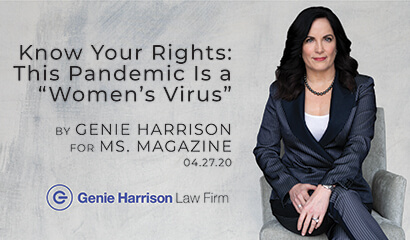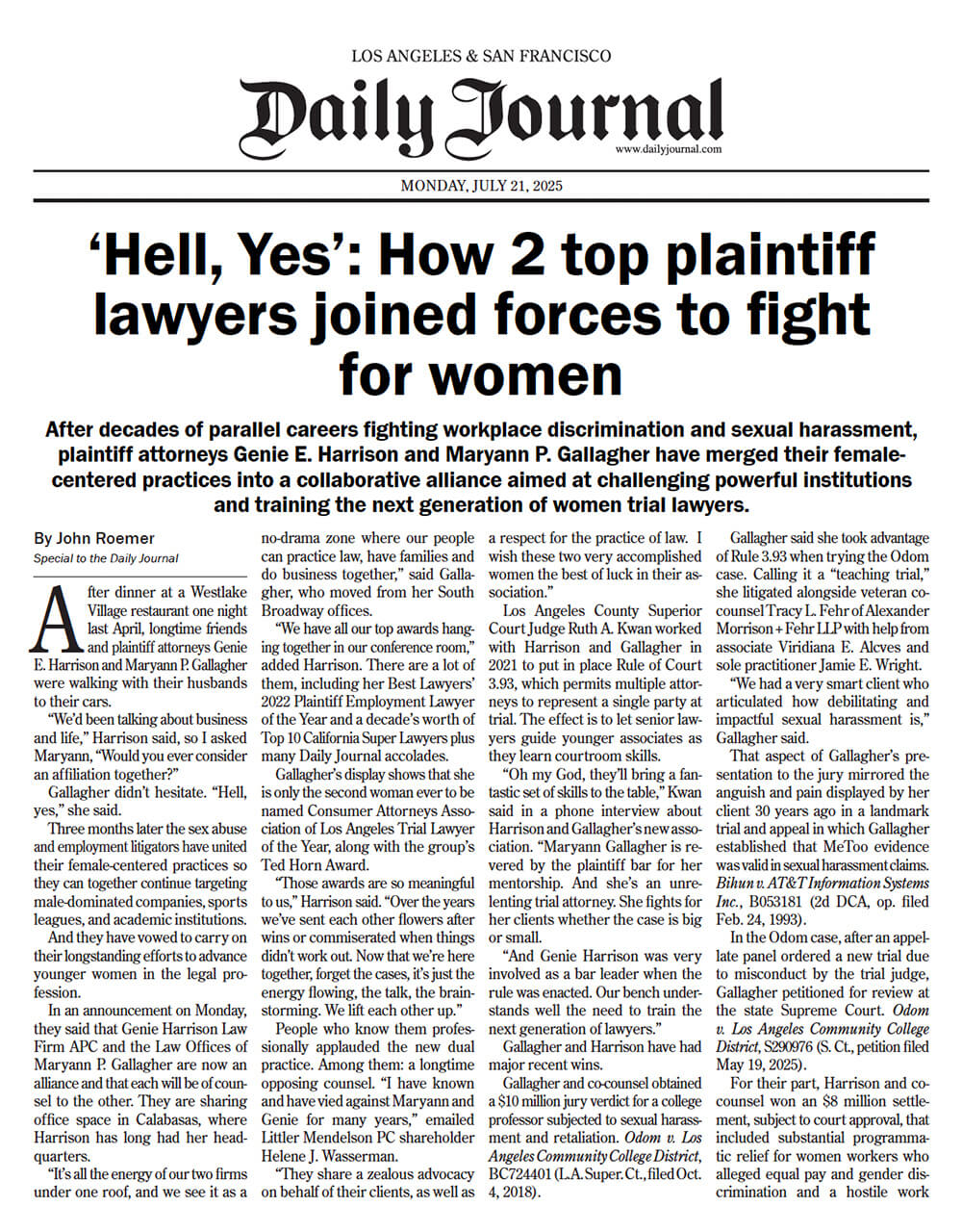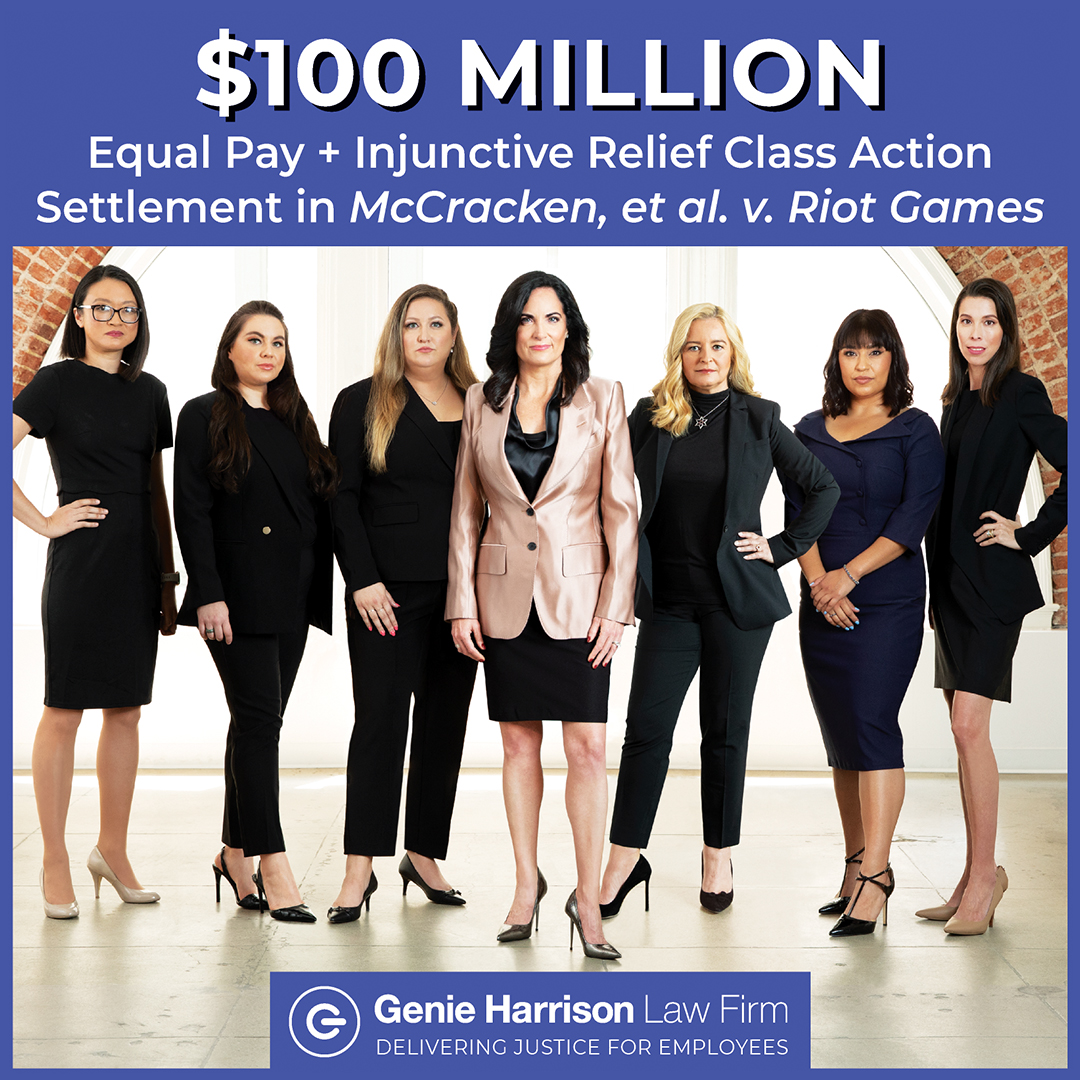Know Your Rights: This Pandemic Is a “Women’s Virus”
April 27, 2020 — by Genie Harrison for Ms. Magazine
Though COVID-19 appears to be more deadly for men, women bear a unique burden from the disease.
More than 70 percent of healthcare workers in the U.S. are women. Women provide the vast majority of primary care for children and seniors. Women are more likely to work in jobs that cannot be done remotely and to lack health insurance, disability insurance and unemployment insurance.
One in three jobs held by women has been designated essential, according to a New York Times analysis. And non-white women are more likely to be doing “essential jobs” than anyone else:
“The work they do has often been underpaid and undervalued—an unseen labor force that keeps the country running and takes care of those most in need, whether or not there is a pandemic.”
March 31 was Equal Pay Day, the date in the year until which women must work in order to earn what men made in the prior year. (And if Equal Pay Day was based on a more comprehensive measure of the earnings gap, the day would fall much later in the year—more like October.)
The gender pay gap continues to play out even when women work from home—and for women who have workplace benefits, pay inequities will be mirrored in the benefits they receive while on leave or unemployed.
Employers are pointing to the economic impact of COVID-19 to justify downsizing and pay rollbacks, whether warranted or not.
For all women, it’s important to know your employment rights during the pandemic.
On March 18, Congress enacted H.R. 6201, the Families First Coronavirus Response Act (FFCRA), which creates new and expands existing protections for employees affected by the virus.
The FFRCA includes the Emergency Family Medical Leave Expansion Act, which applies to employers with fewer than 500 employees. (Employers with fewer than 50 employees who can show that the law would jeopardize their business may also be exempted.)
If you work for a covered employer, the FMLA Expansion Act protects you if you can’t work or telework because you need to care for a child whose school or daycare has been closed or whose care provider is unavailable because of the virus. You’re entitled to 12 weeks of paid leave—the first ten days of which can be unpaid.
Subsequent days are paid at not less than two-thirds of your regular rate of pay based on the number of hours you would otherwise be normally scheduled to work. Paid leave can’t exceed $200 per day, or $10,000 total, and your wages won’t be subject to social security payroll tax.
After your leave has ended, your employer must restore you to your prior position—but there’s an exemption for employers with fewer than 25 employees if the position no longer exists because of the pandemic, as long as the company makes reasonable efforts to restore you to an equivalent position.
If you’re unable to work because of a federal, state or local quarantine or isolation order—or if you’ve been advised by a healthcare provider to quarantine, are yourself experiencing symptoms of COVID-19, or need to care for someone who’s impacted by the virus (including a child whose school or place of care is closed)—the Emergency Paid Sick Leave Act provides sick leave benefits.
As with the FMLA Expansion Act, the Paid Sick Leave Act doesn’t apply to employers with more than 500 employees and smaller businesses with fewer than 50 employees that can show that compliance with the law would jeopardize their business.
The Emergency Paid Sick Leave Act provides full-time employees with 80 hours of sick leave and part-time workers with sick leave equal to their average hours worked in a two-week period. Sick leave is available immediately, regardless of how long you’ve been with your employer, but it doesn’t carry over from year to year.
If your employer already has a paid leave policy, it must still provide you with leave under the act, and you can’t be required to use other paid leave before using sick time under the new paid sick leave law.
If you need to take leave for your own health condition, you’ll get paid the greater of your normal wage or the applicable minimum wage. If you’re caring for a family member, you’ll get two-thirds of that amount.
There is a cap of $511 per day, for a total of $5,110, if you’re subject to a quarantine or isolation order, if you’ve been advised by a health care provider to self-quarantine, or if you take leave because you have COVID-19 symptoms and are seeking a medical diagnosis.
If you take leave to care for others, your leave is capped at $200 per day and $2,000 in the aggregate. Wages under emergency leave are not subject to the social security payroll tax.
Your employer must post notices in the workplace about emergency sick leave, and it may not require you to find a replacement to cover your hours during your time off. Your company is also prohibited from firing you or discriminating against you if you request paid sick leave or file a complaint against the employer related to sick leave.
All workers who have lost their jobs, been furloughed or had their hours reduced as a result of COVID-19 are entitled to unemployment benefits. Information about unemployment eligibility and how to apply should be posted at your state’s employment development website.
An old African proverb says “If you want to go quickly, go alone. If you want to go far, go together.”
As we move through the pandemic, my hope is that we emerge from this experience with a deeper appreciation for our interconnectedness and that we choose to properly compensate our essential workers—healthcare workers, grocery store and restaurant workers, janitors and those who pick and deliver our food and supplies—so many of whom are women.
Read the story above at Ms. Magazine >
About Genie Harrison
Genie Harrison represents plaintiffs in employment and sexual abuse cases as lead trial attorney at the Genie Harrison Law Firm in Los Angeles and is the Vice President of Consumer Attorneys Association of Los Angeles. She credits Ms. as a lifeline, during her college years, to the feminist movement; now, she writes about legal and social issues to provoke action. You can contact her at genie@genieharrisonlaw.com.





